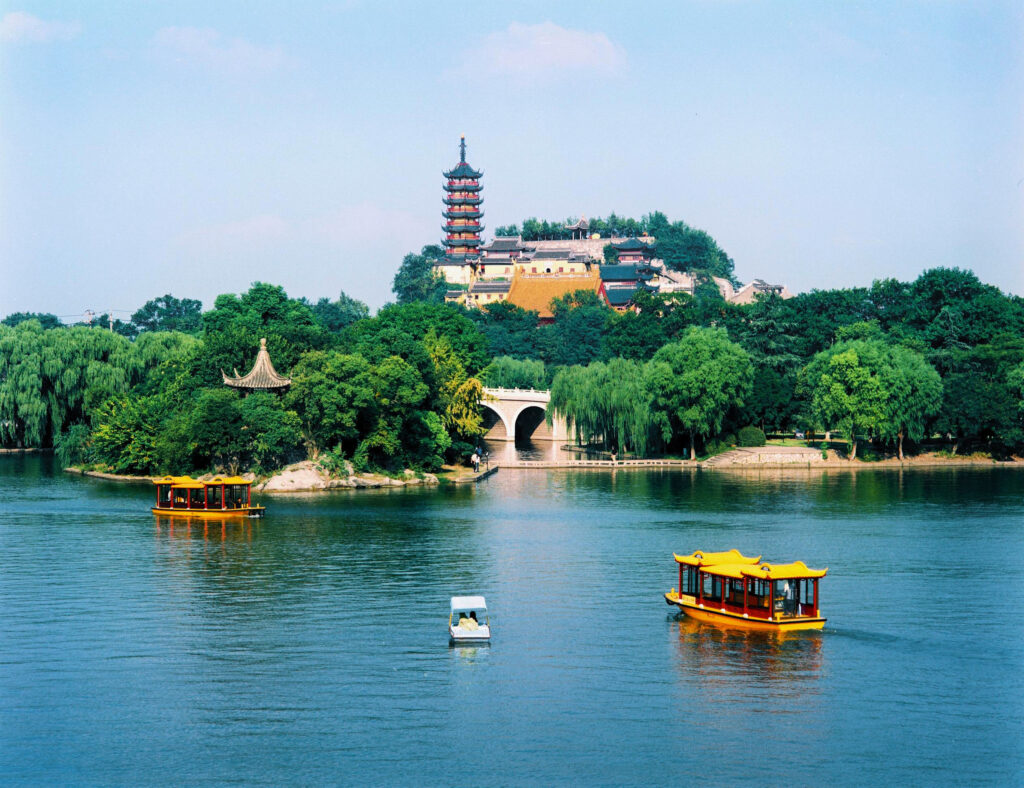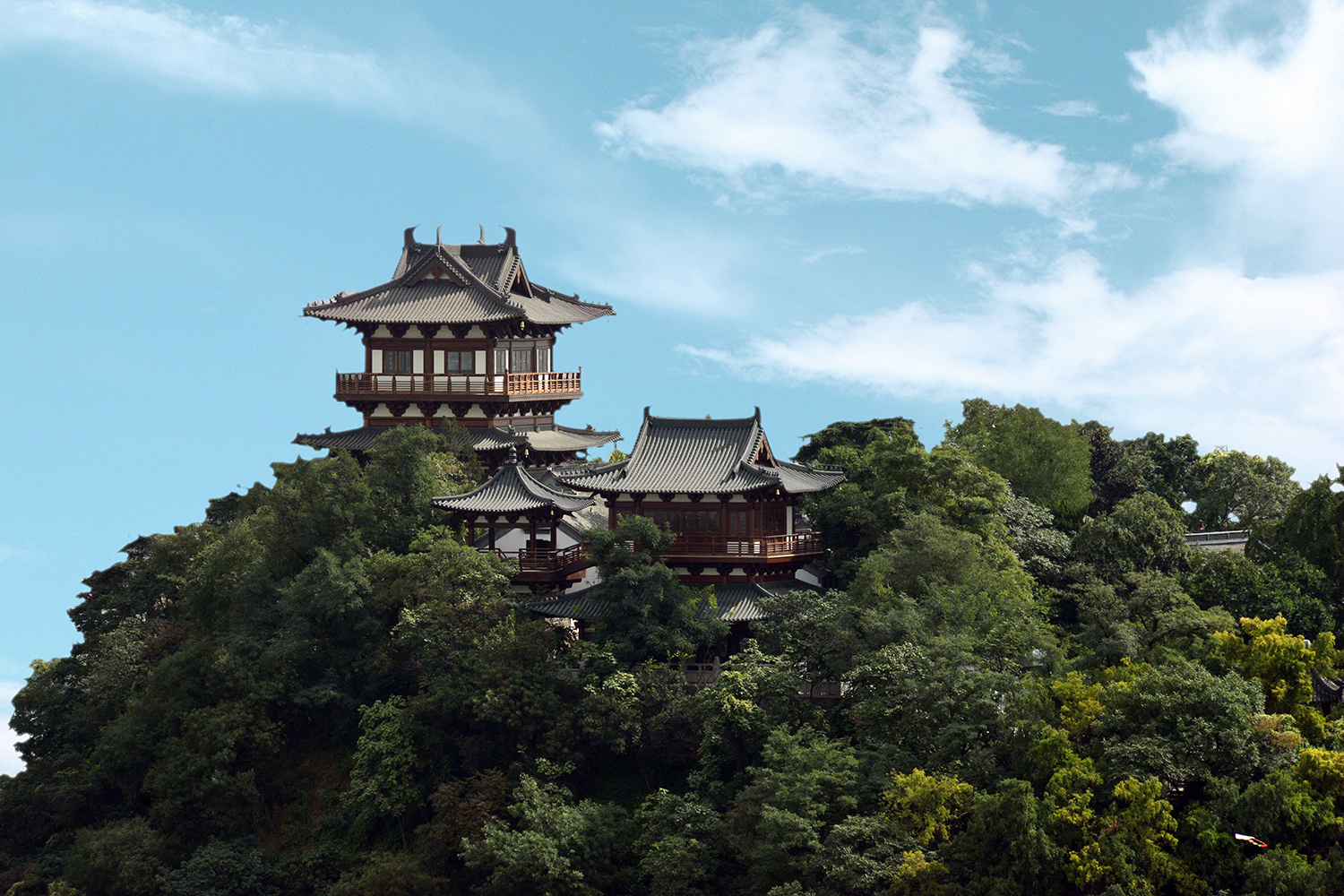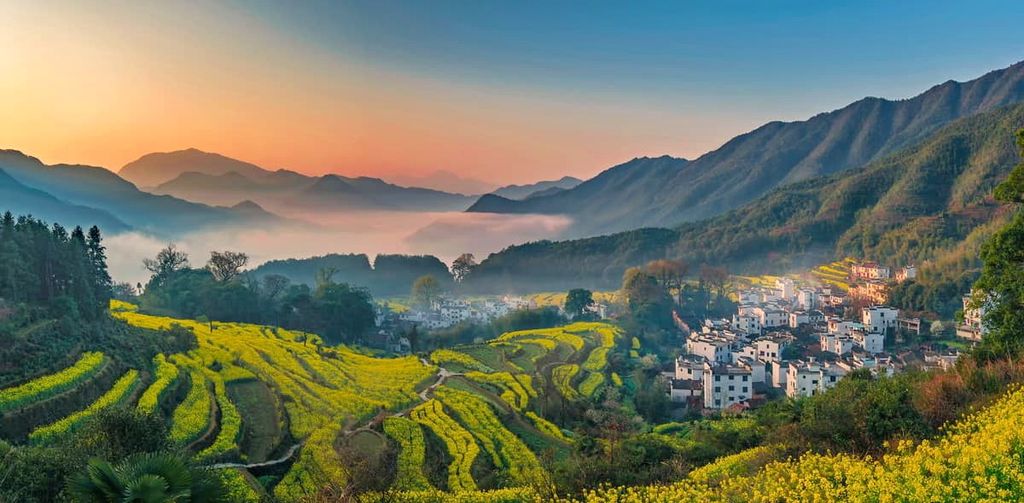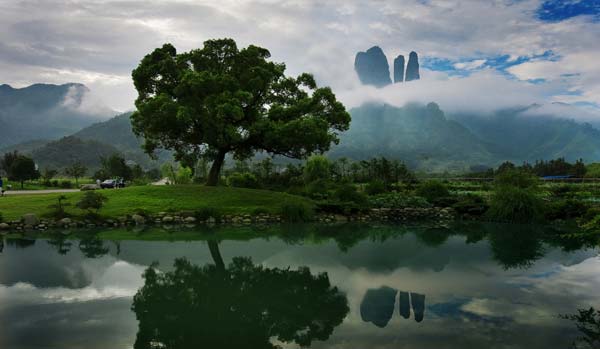Unlocking the Secrets of Zhenjiang’s Three Mountains: A Journey Through Time

An Essential Guide to Visiting Three Mountains Of Zhenjiang
Nestled in the picturesque landscape of Zhenjiang, the Three Mountains—Jiaoshan, Beigu, and Jinshan—offer an enchanting escape into a realm where nature, history, and culture converge. Among these, Jiaoshan stands out not only for its stunning views but also for its rich tapestry of calligraphy and ancient inscriptions that echo the voices of scholars from centuries past. Imagine ascending a peaceful hill, surrounded by lush greenery, while contemplating the profound wisdom etched into stone tablets that have withstood the test of time.
This guide will take you on a journey through the Three Mountains of Zhenjiang, detailing each mountain’s unique attractions, accessibility tips, and nearby dining options. You’ll discover the serene beauty of Jiaoshan, the historical significance of Beigu, and the spiritual ambiance of Jinshan, ensuring you capture the essence of this enchanting region. Whether you’re an avid hiker, a history buff, or simply seeking a tranquil retreat, the Three Mountains promise an unforgettable experience that will linger in your memory long after your visit.
In This Guide
- An Essential Guide to Visiting Three Mountains Of Zhenjiang
- The Rich History and Legends of Three Mountains Of Zhenjiang
- Main Highlights: What You Absolutely Can’t Miss
- Planning Your Visit: A Practical Guide
- Tickets: Prices, Booking, and Tips
- How to Get There: A Complete Transportation Guide
- Local Cuisine and Accommodation Nearby
- Frequently Asked Questions
- Final Thoughts on Your Trip
The Rich History and Legends of Three Mountains Of Zhenjiang
The Historical Significance of Zhenjiang’s Three Mountains
The Three Mountains of Zhenjiang—Jiaoshan, Beigu Mountain, and Jinshan Mountain—are not just picturesque landscapes; they are steeped in rich history and local legends that have shaped the cultural identity of this charming city in Jiangsu Province, China. Each mountain offers a unique narrative, intertwined with the philosophy, spirituality, and artistry of ancient Chinese civilization.
Jiaoshan: A Sanctuary of Culture and Reflection
Jiaoshan, with its serene beauty, has long been a site for contemplation and worship. Dating back over a millennium, the mountain is home to a wealth of Buddhist temples and ancient inscriptions. Among these are the famous calligraphy tablets, which are second in prominence only to those found in Xi’an. These tablets, known as BeiLin, showcase the mastery of Chinese calligraphy and serve as a historical archive of literary and artistic expression.
One of the most renowned legends associated with Jiaoshan is that of the “Jiaoshan Dragon.” According to folklore, a dragon once resided in the mountain, bringing prosperity to the region. Villagers believed that during the Dragon Boat Festival, the dragon would swim up the Yangtze River to bless the crops. This tale not only highlights the area’s agricultural importance but also reflects the deep connection between nature and spirituality in local culture.
Beigu Mountain: The Fortress of History
Beigu Mountain, standing tall with its rugged charm, has served as a strategic military site throughout Chinese history. Its fortifications date back to the Ming Dynasty, when it was crucial in defending the region against foreign invasions. The remnants of these ancient walls still stand today, whispering stories of valor and resilience.
One intriguing legend surrounding Beigu Mountain involves a famous general from the Three Kingdoms period, Zhou Yu. It is said that he would often climb the mountain to strategize against his enemies, drawing inspiration from its commanding views. His spirit is believed to linger, granting courage to those who seek it. Climbing Beigu Mountain offers not only a glimpse into the past but also breathtaking views of the Yangtze River, making it a must-visit for history enthusiasts and nature lovers alike.
Jinshan Mountain: Spiritual Heights
Jinshan Mountain, the most revered of the three, is known for its majestic peaks and numerous temples, including the celebrated Jinshan Temple. This mountain is a significant pilgrimage site for Buddhists, believed to be the resting place of revered monks and spiritual leaders. The temple’s architecture reflects intricate designs that merge with the natural landscape, creating an atmosphere of tranquility and reverence.
A famous legend associated with Jinshan Mountain is that of the “Golden Mountain.” Local lore suggests that a golden dragon once circled the peak, dropping precious jewels into the river below. This legend not only enriches the mountain’s allure but also symbolizes the wealth of spiritual and natural treasures found in the area. Pilgrims and visitors often leave offerings at the temple, hoping to gain blessings and prosperity.
Conclusion: A Tapestry of Legend and History
The Three Mountains of Zhenjiang are more than just geographical formations; they are a tapestry of history, spirituality, and legends that continue to resonate with both locals and travelers. Each mountain invites exploration and reflection, allowing visitors to connect with the cultural heritage of Zhenjiang. As you traverse these ancient paths, you’ll find that the stories of the past are alive in the whispers of the wind and the rustle of leaves, waiting to be discovered by those willing to listen.

Three Mountains Of Zhenjiang.
Main Highlights: What You Absolutely Can’t Miss
Jiaoshan Mountain: A Journey Through History
Begin your adventure at Jiaoshan Mountain, often regarded as the crown jewel of the Three Mountains of Zhenjiang. This scenic island is accessible via a short ferry ride, making it a delightful excursion. Once you arrive, take a leisurely stroll along its winding paths that lead to stunning viewpoints and historical sites. The highlight of Jiaoshan is the ancient temple perched atop the hill, offering breathtaking panoramic views of the Yangtze River. Don’t forget to capture the intricate calligraphy inscriptions along the way, which are a testament to the region’s rich cultural heritage. Tip: Arrive early to enjoy the tranquility before the crowds arrive, and bring water to stay refreshed during the climb.
Beigu Mountain: Nature and Serenity
Next on your itinerary, Beigu Mountain beckons with its tranquil atmosphere and lush landscapes. Known for its serene hiking trails and vibrant flora, this mountain is perfect for nature lovers seeking a peaceful escape. As you ascend, take a moment to appreciate the diverse plant life and the occasional glimpse of local wildlife. At the summit, you’ll find stunning views of the surrounding countryside and the city below. Tip: Pack a picnic to enjoy at the top while soaking in the breathtaking vistas.
Xijin Ferry: A Gateway to Adventure
No visit to Zhenjiang would be complete without a ride on the historic Xijin Ferry. This charming ferry not only connects the mainland to the nearby mountains but also offers a unique perspective of the city’s skyline. As you glide across the water, take in the fresh air and watch as the landscape transforms around you. The ferry ride itself is a delightful experience, allowing for great photo opportunities. Tip: Consider taking the ferry at sunset for a magical view of the city illuminated by golden hues.
Dinghui Temple: Spiritual Oasis
Dinghui Temple is a must-visit for those interested in exploring Zhenjiang’s rich Buddhist heritage. Nestled amidst lush greenery, this temple complex is known for its stunning architecture and peaceful ambiance. As you wander through the intricately designed halls, you’ll encounter serene Buddha statues and beautiful gardens that invite reflection and tranquility. Tip: Attend a local prayer session for an authentic cultural experience, but be sure to check the schedule ahead of time.
Sanzhao Cave: Nature’s Marvel
Venture into Sanzhao Cave, a captivating natural wonder that showcases the geological beauty of the region. The cave features impressive stalactites and stalagmites, and its cool interior offers a refreshing break from the heat outside. As you explore, listen to the gentle echoes of dripping water and embrace the cave’s otherworldly atmosphere. Tip: Wear sturdy shoes for the uneven terrain and bring a flashlight to fully enjoy the hidden corners of this natural gem.
Jinshan Temple of Zhenjiang: A Cultural Icon
Last but not least, make your way to Jinshan Temple, a cultural icon that stands proudly on the banks of the Yangtze River. This historic site is not only an architectural marvel but also a place steeped in legend and folklore. Explore the temple’s intricate carvings and enjoy the serene views from its terraces. The surrounding gardens are perfect for a leisurely stroll, providing a lovely backdrop for photographs. Tip: Check the opening hours as they may vary seasonally, and plan to visit in the early morning for a quiet experience.
Final Thoughts
The Three Mountains of Zhenjiang promise an unforgettable experience filled with natural beauty, rich history, and cultural treasures. Whether you are hiking through lush landscapes or exploring ancient temples, each location offers a unique glimpse into the heart of this enchanting region. So pack your bags, grab your camera, and prepare for an adventure that you won’t soon forget!

Three Mountains Of Zhenjiang.
Planning Your Visit: A Practical Guide
Best Time to Visit
The ideal time to explore the Three Mountains of Zhenjiang—Jiaoshan, Beigu Mountain, and Jinshan Mountain—is during the spring (March to May) and autumn (September to November) months. During these seasons, the weather is mild, making it perfect for hiking and enjoying the stunning natural scenery. Summer can be hot and humid, while winter might bring cold temperatures, which may deter outdoor activities.
Recommended Itinerary
Day 1: Jiaoshan Mountain
– Morning: Start your day by taking a ferry to Jiaoshan Mountain. Purchase your ticket at the mainland ticket booth (around 50 RMB) and enjoy a scenic boat ride. Once you arrive, head to the ancient calligraphy tablets and explore the beautiful gardens.
– Afternoon: Hike up to the temple at the summit. Although there are some steps, the views are worth the effort. Spend time at the temple and enjoy the tranquil atmosphere.
– Evening: Return to the mainland and enjoy a local dinner at one of the nearby restaurants.
Day 2: Beigu Mountain and Jinshan Mountain
– Morning: Begin at Beigu Mountain, easily accessible by public transport. Explore its historical sites and enjoy some light trekking.
– Afternoon: Head to Jinshan Mountain, famous for its beautiful pagoda and temple. Spend time wandering through its scenic areas and soaking in the culture.
– Evening: Wrap up your trip with a relaxing dinner, reflecting on your adventures at the Three Mountains.
Photography Tips
- Golden Hours: The best times for photography are during the early morning and late afternoon when the light is softer. Capture the mountains bathed in warm sunlight for stunning shots.
- Scenic Views: Look for elevated viewpoints along your hikes to capture panoramic shots of Zhenjiang and the surrounding landscapes.
- Details Matter: Don’t forget to take close-up photos of intricate details, such as the calligraphy tablets and temple architecture, to encapsulate the cultural essence of your visit.
What to Wear
- Comfortable Footwear: Opt for sturdy hiking shoes or sneakers to navigate the trails comfortably.
- Weather-Appropriate Clothing: Dress in layers, especially if visiting during transitional seasons. A light jacket is advisable for cooler evenings.
- Sun Protection: Bring sunglasses, a hat, and sunscreen, particularly in summer, to protect yourself from the sun during outdoor activities.
Insider Tips
-
Avoid Crowds: Try to visit on weekdays rather than weekends to enjoy a quieter experience with fewer tourists.
-
Local Cuisine: Sample local delicacies at nearby eateries. Zhenjiang is known for its unique flavors, so be adventurous with your food choices.
-
Plan for Closure: Some sites may close for maintenance or renovations, such as the pagoda at Jiaoshan. Check ahead to avoid disappointment.
-
Bring Snacks and Water: While there are limited food options on the islands, bringing your own snacks and water ensures you stay energized during your explorations.
-
Explore Beyond the Mountains: Don’t miss out on other attractions nearby, such as the Zhenjiang Museum or the scenic riverside, which are perfect for a leisurely stroll after your hikes.
With these insights, your visit to the Three Mountains of Zhenjiang will be enjoyable and memorable. Embrace the natural beauty and rich history that this enchanting region has to offer!

Three Mountains Of Zhenjiang.
Tickets: Prices, Booking, and Tips
Exploring the Three Mountains of Zhenjiang is a captivating experience, but it’s important to understand the ticketing system to ensure a smooth visit. Here’s a comprehensive breakdown of the ticket options, pricing, and tips for booking your adventure.
| Ticket Type | Price (CNY) | Includes |
|---|---|---|
| Standard Ticket | 50 | Ferry ride to Jiaoshan Island + access to attractions on the island |
| Discounted Ticket (Seniors, Students) | 25 (varies based on eligibility) | Same as above, subject to verification of age/student status |
Booking Information
-
Where to Buy: Tickets can be purchased at the ticket booth located on the mainland near the ferry dock. It’s advisable to arrive early to avoid queues, especially during peak tourist seasons.
-
Online Booking: While most tickets are available for on-site purchase, it’s wise to check for any online booking options through local tourism websites or apps. This can save you time and guarantee your spot on busy days.
Tips for a Seamless Visit
-
Book in Advance: If you have the option to book online, do so. This is especially recommended during weekends or holidays when the islands can become quite busy.
-
Check Opening Hours: The attractions are typically open from 8:00 AM to 5:00 PM. Plan your visit accordingly to maximize your time on the island.
-
Bring Essentials: There are limited food and drink options on Jiaoshan Island, so consider packing snacks and water for your hike.
-
Wear Comfortable Shoes: The trek up the mountain involves many steps, so comfortable footwear will enhance your experience.
-
Explore Early: Arriving early not only helps you avoid crowds but also allows you to enjoy the serene beauty of the island before it gets busy.
By staying informed about ticket prices and booking in advance, you can fully enjoy the rich history and breathtaking views offered by the Three Mountains of Zhenjiang. Happy travels!
How to Get There: A Complete Transportation Guide
Accessing the Majestic Three Mountains of Zhenjiang
Zhenjiang, located in Jiangsu Province, is home to the renowned Three Mountains: Jiaoshan, Beigu, and Jinshan. Each mountain offers a unique glimpse into the region’s cultural and natural beauty. Whether you’re arriving from a nearby city or exploring the area, this guide provides essential transportation details to help you make the most of your visit.
From the Nearest Major City
Traveling from Nanjing:
– By Train: The journey from Nanjing to Zhenjiang is convenient and quick. High-speed trains leave from Nanjing South Railway Station and arrive at Zhenjiang Railway Station in about 30 minutes. Tickets typically range from 40 to 70 RMB ($6 to $10) for second-class seats.
– By Bus: Long-distance buses depart from Nanjing’s bus terminals to Zhenjiang, taking approximately 1.5 hours. Tickets cost around 30 RMB ($4.50).
– By Car: If you prefer driving, Zhenjiang is about 70 kilometers (43 miles) from Nanjing. The drive takes about an hour via the G25 expressway, depending on traffic.
Traveling from Shanghai:
– By Train: High-speed trains from Shanghai to Zhenjiang take approximately 1.5 hours, with tickets priced between 70 to 120 RMB ($10 to $17). Departures are frequent from both Shanghai Hongqiao and Shanghai Railway Stations.
– By Bus: Buses from various terminals in Shanghai take around 2.5 to 3 hours, and tickets can be found for about 50 RMB ($7).
– By Car: The distance is roughly 200 kilometers (124 miles), with a driving time of around 2.5 hours, mainly along the G2 expressway.
Getting to the Three Mountains
Reaching Jiaoshan Mountain:
Jiaoshan is situated on an island accessible via ferry or fast boat. Here’s how to get there:
- Ferry: The ferry terminal is located near Zhenjiang Railway Station. The ferry ride to Jiaoshan takes about 15 minutes and costs around 25 to 50 RMB ($4 to $7), depending on the type of ticket purchased. Ferries operate frequently from 8:00 AM to 5:00 PM.
- Fast Boat: Fast boats may also be available, providing a quicker, albeit slightly more expensive, means of reaching the island.
Accessing Beigu and Jinshan Mountains:
Both Beigu and Jinshan Mountains are located on the mainland and are accessible via local transportation:
- By Bus: Local buses connect Zhenjiang Railway Station to both mountain areas. Bus fares are typically around 2 to 5 RMB ($0.30 to $0.80) and the ride takes approximately 30 minutes.
- By Taxi or Ride-Sharing: Taxis and ride-sharing services are widely available. A trip to either mountain will cost around 20 to 40 RMB ($3 to $6), depending on your starting point.
Getting Around the Scenic Area
Once you arrive at the mountains, exploring the scenic areas is straightforward:
- Walking: Each mountain has well-marked walking paths that provide access to key attractions such as temples, gardens, and historical sites. Comfortable walking shoes are recommended, as some trails may involve steep climbs.
- Bicycles: Renting a bicycle is a popular option for those wanting to explore at a leisurely pace. Rental services are available near the entrance of the scenic areas.
- Local Guides: Consider hiring a local guide for a more enriching experience. They offer insights into the cultural and historical significance of the sites.
Conclusion
Visiting the Three Mountains of Zhenjiang is a rewarding experience, blending stunning natural landscapes with rich cultural heritage. With various transportation options available, getting there and exploring the scenic areas is both easy and enjoyable. Plan your trip, immerse yourself in the local culture, and take in the breathtaking views that await you!

Three Mountains Of Zhenjiang.
Local Cuisine and Accommodation Nearby
Nestled in the picturesque region of Zhenjiang, the Three Mountains offer not just breathtaking views, but also a delightful culinary experience and diverse accommodation options that cater to every traveler. After exploring the serene heights of Jiaoshan, Beigu Mountain, and Jinshan Mountain, indulge your palate with local specialties and unwind in charming lodgings nearby.
Savor the Local Flavors
-
Zhenjiang Vinegar: Known for its rich flavor, Zhenjiang vinegar is a staple in local cuisine. It’s often used in dipping sauces or as a seasoning for various dishes. Don’t miss trying it with dumplings or as a dressing for cold dishes.
-
Salted Duck: This dish is a must-try when visiting Zhenjiang. The duck is marinated with a unique blend of spices and salt, creating a savory treat that’s both tender and flavorful. It makes for an excellent snack or a main course when paired with rice.
-
Longxu Fish: Freshwater fish, particularly from the Yangtze River, is a highlight of Zhenjiang’s culinary scene. Longxu fish is typically steamed or braised with soy sauce and ginger, offering a delicate taste that celebrates the region’s aquatic bounty.
-
Sichuan-style Hotpot: While Sichuan cuisine originates from a different province, many local restaurants in Zhenjiang serve it with their own twist. Expect a bubbling pot of spicy broth filled with fresh vegetables, meats, and seafood, perfect for sharing with friends and family.
Where to Stay
Luxury Option: Zhenjiang Grand Hotel
For those seeking a lavish experience, the Zhenjiang Grand Hotel offers opulent rooms with stunning views of the Yangtze River. This five-star hotel features a spa, fine dining options, and easy access to local attractions, making it an ideal base for your adventures.
Boutique Option: The Cloud Hotel
The Cloud Hotel provides a charming atmosphere with its uniquely decorated rooms that reflect local culture. Nestled near the foot of Beigu Mountain, it’s an excellent choice for travelers looking for a cozy retreat with personalized service and home-cooked breakfast options.
Budget Option: Zhenjiang Youth Hostel
Perfect for backpackers and budget-conscious travelers, Zhenjiang Youth Hostel offers clean, dormitory-style accommodations with a friendly vibe. It’s conveniently located near public transport, allowing easy access to the Three Mountains and other attractions in the area.
Conclusion
After a day of exploring the scenic landscapes and rich history of the Three Mountains of Zhenjiang, immerse yourself in the local flavor and rest your head at one of these welcoming accommodations. Whether you’re savoring a hearty meal or enjoying a peaceful night’s sleep, Zhenjiang promises a memorable experience that will linger long after your visit.

Three Mountains Of Zhenjiang.
Frequently Asked Questions
Frequently Asked Questions about the Three Mountains of Zhenjiang
-
Is the area suitable for children and the elderly?
Yes, the Three Mountains of Zhenjiang, including Jiaoshan, are generally suitable for families with children and elderly visitors. While some paths may involve steps or slight inclines, there are resting spots along the way. However, it’s advisable for those with mobility issues to assess their comfort level with walking and climbing. -
Are there English signs and guides available?
Many signs at the Three Mountains feature English translations, particularly at major attractions. However, it’s beneficial to have a translation app or guidebook handy, as some information may only be available in Chinese. Hiring a local guide who speaks English can also enhance your experience. -
How much time should I plan to spend at the Three Mountains?
It is recommended to allocate at least half a day (around 4 to 6 hours) to fully enjoy the Three Mountains, including time for hiking, exploring temples, and taking in the views. If you wish to visit all three mountains or engage in leisurely activities, consider spending a full day. -
What is the best time to visit?
Spring (March to May) and autumn (September to November) are ideal for visiting, as the weather is mild and the scenery is particularly beautiful. Summer can be hot, while winter may present challenges with colder temperatures and potential snow. -
Is there an entrance fee?
Yes, there is an entrance fee to access the Three Mountains. For Jiaoshan, the typical ticket price is around 50 RMB, which often includes a ferry ride to the island. Discounts may be available for seniors, so be sure to inquire about any applicable rates. -
What facilities are available on the mountains?
Facilities such as restrooms and small vendors selling snacks and drinks are available, but options may be limited. It’s a good idea to bring water and light refreshments with you, especially if you plan to hike or spend a lot of time exploring. -
Are pets allowed on the mountains?
Generally, pets are not allowed in the park areas of the Three Mountains. It’s advisable to check specific regulations at each mountain, as policies may vary. -
How do I get to the Three Mountains from Zhenjiang city center?
The Three Mountains are easily accessible from Zhenjiang city center. You can take a local bus or taxi to the ferry terminal. Once there, you will need to purchase a ticket for the ferry or fast boat to reach Jiaoshan. Public transport is frequent and affordable, making it convenient for visitors.
Final Thoughts on Your Trip
As your journey through the enchanting Three Mountains of Zhenjiang comes to a close, take a moment to reflect on the serene beauty and rich history that these iconic peaks have to offer. From the tranquil pathways of Jiaoshan Mountain, where ancient inscriptions whisper tales of the past, to the breathtaking views and lush landscapes that surround you, every step unveils a new layer of cultural significance and natural splendor.
Exploring these mountains isn’t just about the hike; it’s about immersing yourself in the heart of Zhenjiang’s heritage. The temples, calligraphy tablets, and vibrant gardens beckon travelers to pause and savor the moment. Whether you were captivated by the serene ambiance of the temples or inspired by the historical narratives etched into stone, these experiences create lasting memories that resonate long after you’ve left.
So, as you prepare to depart from this beautiful region, carry with you the tranquility of the mountains, the stories of their past, and the beauty of their landscapes. Let your adventure in Zhenjiang be a reminder that the world is filled with wonders waiting to be explored. Embrace the spirit of discovery, and may your travels continue to inspire you!